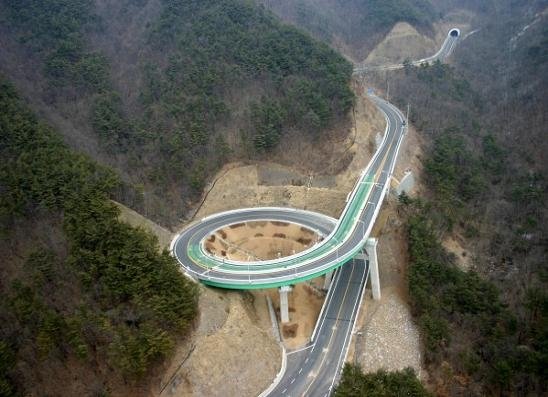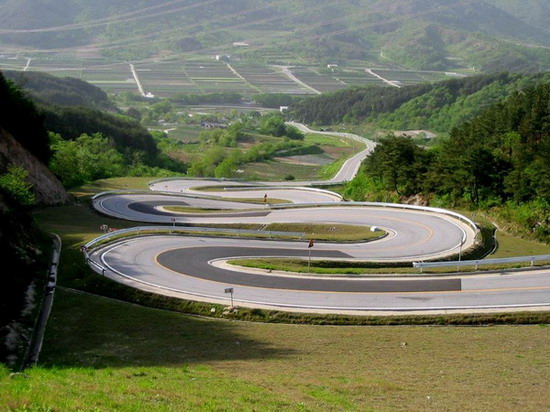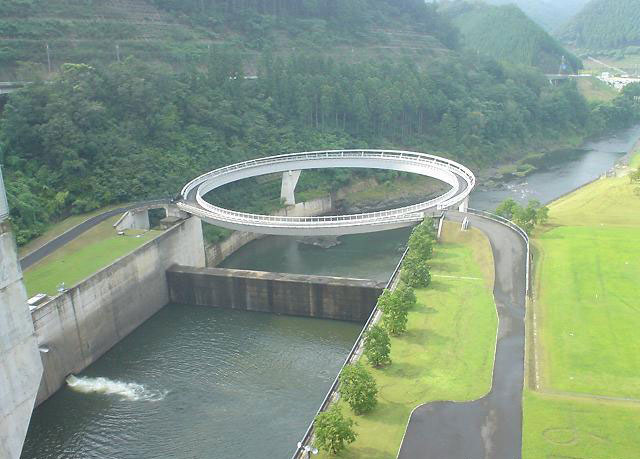Chapter 42: ROAD DESIGN
ROADSIDE HAZARDS
Collisions with fixed roadside objects account for 25-30% of all FATAL accidents.
The reasons for these crashes can include; driver error, driver fatigue, loss of control, vehicle/mechanical failure, weather conditions, poor lighting etc.
If a vehicle is going to crash it is the aim of a road designer is to provide a forgiving roadside, that allows a vehicle to either;
1. Recover and continue its journey without incident
2. Come to a stop off the road without striking anything
3. Have a crash with a forgiving environment that minimizes all damage
To accomplish these goals the following countermeasures are available;
1. Provide a RECOVERY AREA
2. Provide a CLEAR ZONE
3. Provide a PROTECTED ENVIRONMENT
However as with most road engineering a compromise is made between safety, traffic conditions, roadside geometry, economics and the environment.
THE RECOVERY AREA
Where possible roads are engineered with a roadside RECOVERY AREA within which a driver can attempt to regain control. A study has estimated that 80-85% of vehicles traveling at highway speeds can recover within 9 metres of the roadway edge provided the road is flat. The steeper the slope on the side of the road the higher the chance of vehicle roll over and non recovery. However it is not always possible (especially in urban areas) for this RECOVERY AREA to be provided.
THE CLEAR ZONE
Since it is not universally possible to provide a full recovery area, CLEAR ZONES are sections of road (usually with a higher probability of an accident occurring) where all hazards are removed. These zones are free of trees, poles, culvert walls, steep slopes, open drains and other hazards.
PROTECTED ENVIRONMENT
It is estimated that any one particular pole on the side of the road has a 1 in 1000 chance of being struck by a vehicle. However certain poles and other hazards due to their location, the road surface, weather conditions, amount of passing traffic, road geometry and/or other factors can have a much higher probability of being involved in a crash.
A road safety audit can identify the roadside hazards that are most likely to be struck and these can then be removed or protected by some form of crash barrier.
For example a power pole on the outside of a sharp corner in a high speed zone would have a high chance of being struck by an out of control vehicle. Possible countermeasures would include relocating the pole, introducing underground power, protecting the pole with a barrier or replacing the pole with a frangible pole to minimize impact when struck.
Q> Why don't road designers consider the types of trees placed near the road?
A> Since 1988, recognition has been given to the size and type of trees placed beside new road construction. Best practice guidelines now exist to specify the species of trees that are crash worthy, that is will bend, crush or break to reduce the impact on vehicle occupants.
Q> Would there be a road safety benefit by clearing all trees from beside every road?
A> The answer is Yes. Estimates suggest that by clearing trees to provide an extra 0.9 metres recovery space along all roads would reduce accidents by 22%, but in land area Australia's total road reserves are huge, the removal of trees would not only be logistically difficult but it would have significant environmental effects as well.
Q> I have noticed that on mountain roads there are barriers to prevent vehicles plunging over a cliff but on many freeways there are many large open drains beside the road with no barriers beside them, why is this so?
Crash barriers are designed to protect the vehicle from roadside hazards, but the barrier itself when added to the road presents a new hazard. Care must be taken to ensure a barrier does not create a greater hazard than the object it is protecting. As such an open drain may present less danger than the ends of a crash barrier.
Q> What is the most dangerous roadside hazard?
A> Trees and poles are very dangerous, but bridges are the most over-represented hazard (per km of road) in crashes. Bridges are generally narrow (no recovery area), with downhill approaches and preceding corners.
Q> I once saw a crash in which the light pole was ripped out of the ground by the vehicle, how did this happen?
A> Poles can be designed as either slip base or impact absorbing to reduce the impact on vehicle occupants.
The SLIP BASE pole when struck will shear allowing the vehicle to pass underneath the collapsing pole. Careful design and construction is necessary to ensure the pole shears in a pre-determined way. These poles can cause secondary crashes as the pole collapses onto the roadway striking other cars and/or pedestrians.
The IMPACT ABSORBING pole deforms at a slow rate to minimize the impact on vehicle occupants.
(Written by Joel Neilsen, Managing Director, Safe Drive Training)




